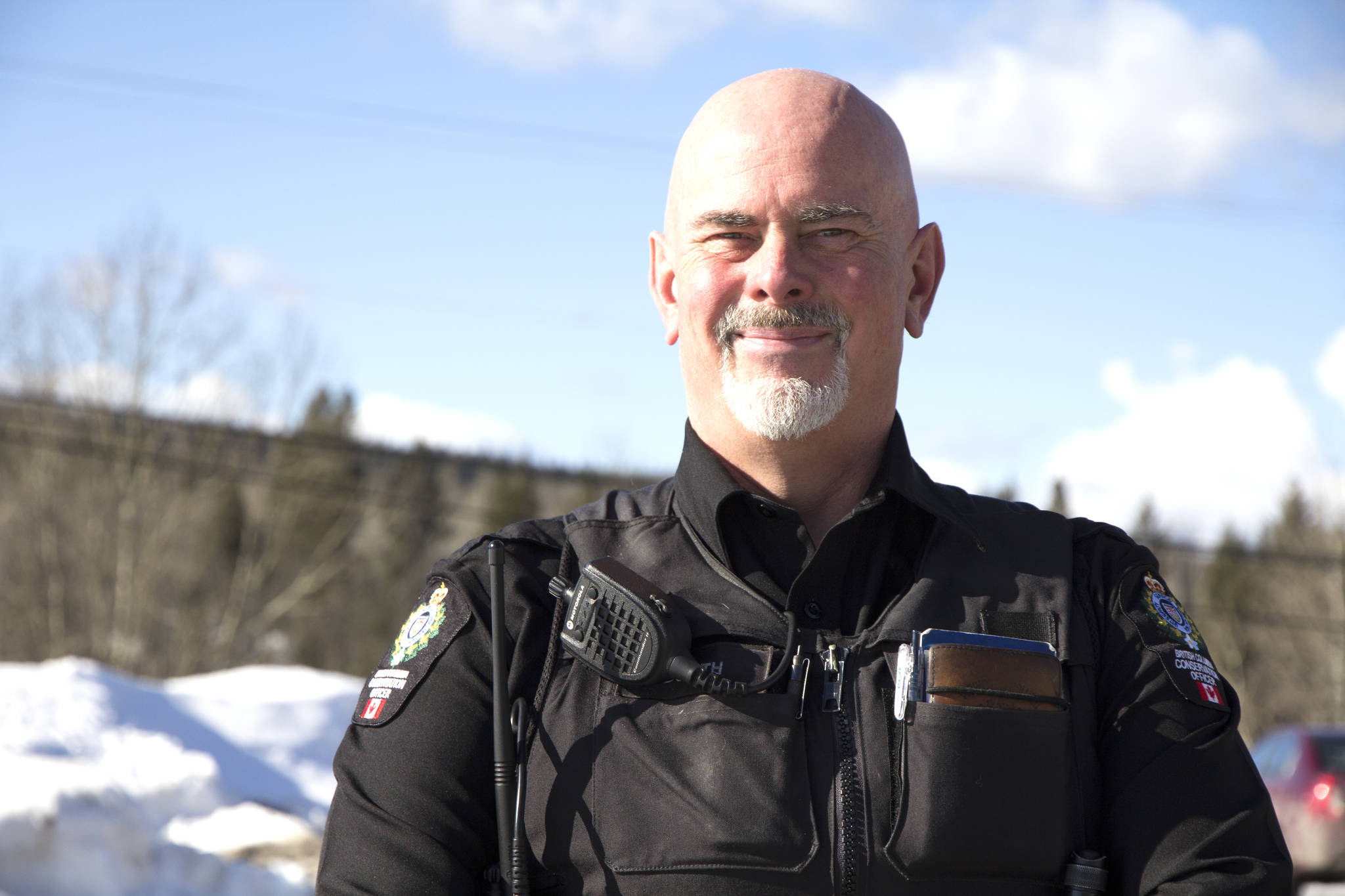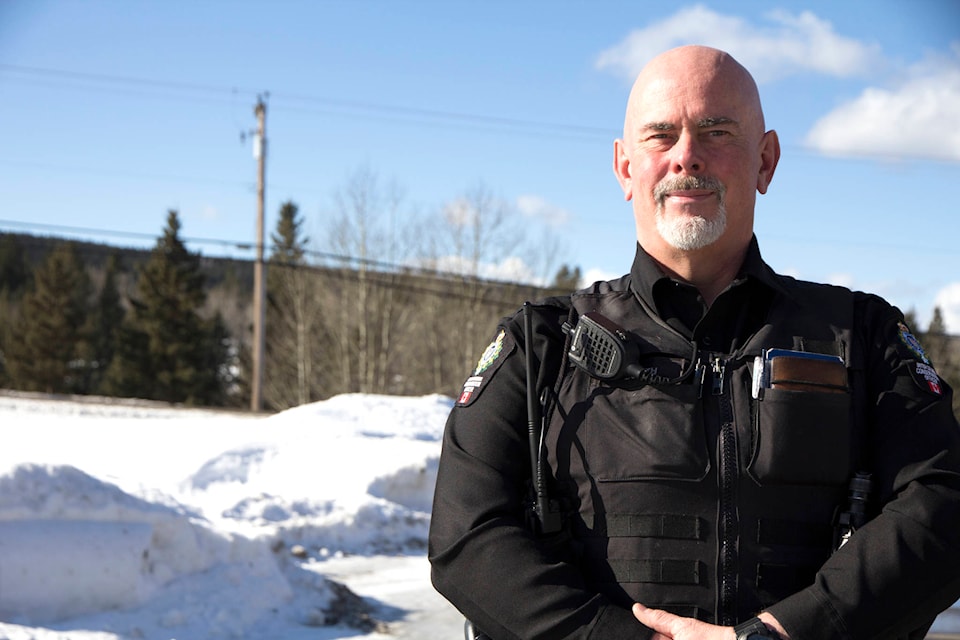No day is ever the same for Murray Booth.
One minute the 100 Mile House conservation officer is monitoring ice fishermen. The next, he is euthanizing a stray cat-eating lynx in downtown 100 Mile. Neither is likely to make him the most popular guy in town, as Booth recently found out when social media lit up over his decision to put the lynx down. While many supported the move, others were outraged.
“Not all our decisions are easy ones or well-received, we understand that. We’re given a short window of time sometimes to make a decision and we do it,” Booth, 55, said. “I can understand people being upset about it.
“I made the call on public safety for that. I didn’t want it that close to a neighbourhood with children. Lynx attacks are extremely rare but my concern was there could be a child playing with a cat and the lynx targets the domestic cat for food.”
Two conservation officers work in the 100 Mile House office, responsible for an area that stretches from north of Lac La Hache to Dog Creek down to 70 Mile House to Mahood Lake up to Mica Mountain and then squared off back to Lac La Hache. It’s part of the Fraser River Zone, which also has two officers in Lillooet and Clearwater. The COs all help each other out.
READ MORE: Supreme Court quashes review of B.C. conservation officer who refused to euthanize bears
For Booth, who started out in logging and took up conservation 20 years ago, the job is everything he ever wanted. He likes the outdoor workplace, the flexible hours and the chance to make a difference in terms of educating people on how to live safely with wildlife in the Cariboo.
“A typical day for a CO is not a typical day. Generally, it depends on what goes on the night before,” Booth said. “We can be called out 24/7 for wildlife or violations in progress, or any number of things the night before. We try to be in the field as much as we can,” Booth said.
During the winter months, the top priority is ice fishing, ensuring anglers have the proper ID or are aware of restrictions, such as the no bait-rule at Simon Lake, for instance. The COs are also responsible for patrolling Mica Mountain to ensure snowmobilers aren’t going into areas closed for caribou.
While the Mica Mountain Riders have been great at posting signs, and compliance is “extremely high,” it’s harder to keep an eye on the area’s many lakes.
“The more use they get the more the potential there is for violations,” Booth said. A big problem is a lack of identification, which can easily be rectified. But for those who are fishing illegally or ignoring bait bans, the penalties can be stiff: Not only would the fish be seized, but the anglers can also potentially lose their equipment and face hefty fines.
The same can be said for illegal hunting of wildlife, as two men recently found out when they admitted to killing two moose without the proper license. They were fined $7,500 and prohibited from hunting for two years.
“It can be extremely costly to not follow the rules,” Booth said.
For the most part, people do follow the law, making mistakes unknowingly, he said. He urges anyone with questions about conservation restrictions to call ahead to the COs office before they go out.
Helping people understand conservation is a huge bonus of his job. One of the main problems, for instance, is reminding people not to put out unsecured garbage or other attractants, to ensure they don’t draw wildlife be it bears, cougars, deer or moose. If animals do find their way to residential areas, the COs are called out to deal with it, such as having to euthanize a cougar last fall caught feasting on a sheep near Green Lake.
“The biggest negative to me is having to kill animals. I don’t like it and I don’t think any CO in the province does,” Booth said. However, when cougars take to killing sheep “they are going to be a problem.”
For the most part, though, the positives of being a CO outweigh the negatives. One of the most “incredible experiences” Booth has ever had was dealing with a tranquillized Grizzly bear. “It’s just amazing to be physically hands-on with a live Grizzly bear.
“Job satisfaction is extremely high for me personally. When we’re catching the people doing illegal things on purpose, that’s one of the highlights. There are so many positives to the job you can probably write an encyclopedia,” Booth said. “There’s a saying that if you love your job, you never have to work a day in your life. That’s how I feel.
“There are lots of days I stop and look around and I say I can’t believe I’m being paid to do this. Some of the areas we get to work in are just absolutely gorgeous.”
@ksinoski
kelly.sinoski@100milefreepress.net
Like us on Facebook and follow us on Twitter.

